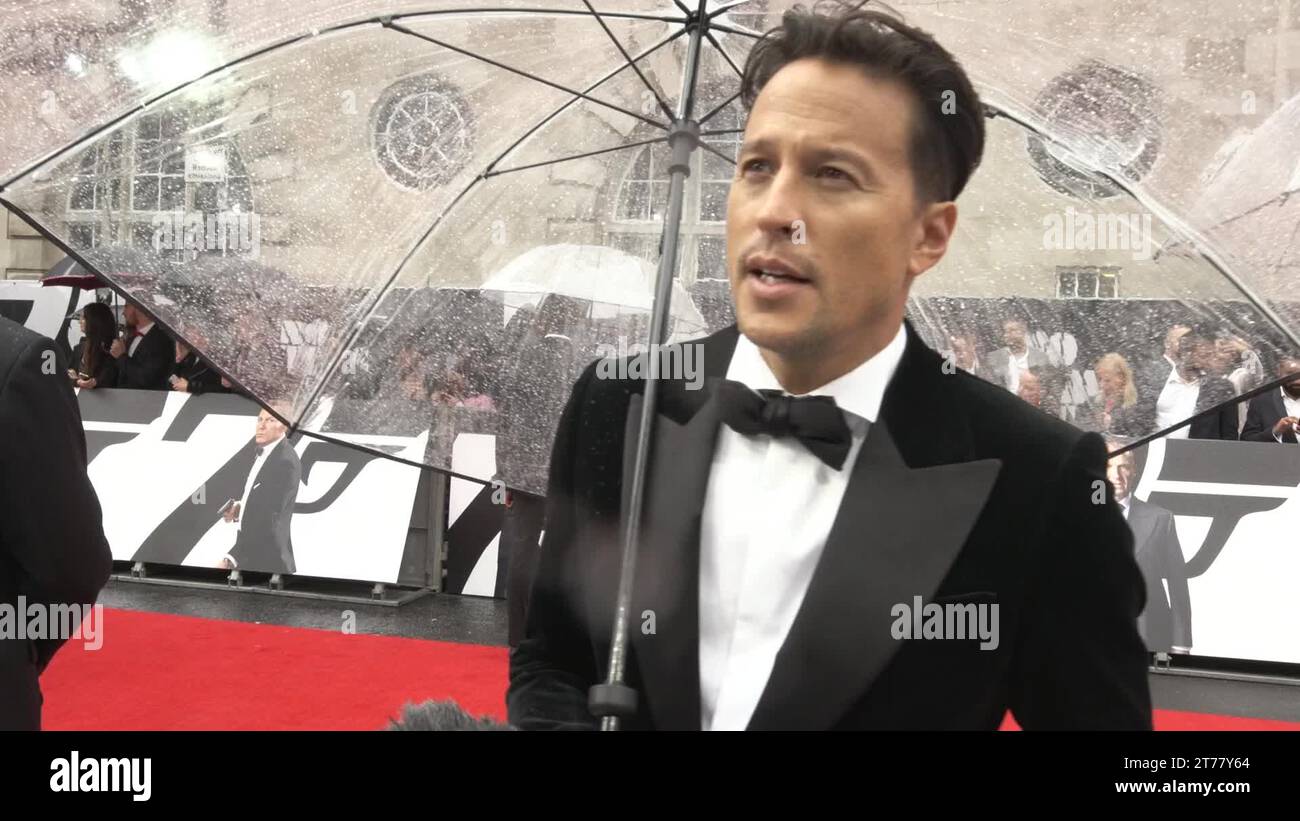The 'Bond Cast': How We Define Connections, Chemical And Financial
Have you ever stopped to think about how we define the fundamental connections that shape our world? It's a pretty interesting question, actually. The phrase "bond cast" might sound a little bit mysterious at first, but it really speaks to the ways we establish, measure, and understand the links between things. Whether we're talking about the tiny, invisible forces holding molecules together or the big agreements that tie our finances to future returns, the idea of a "bond cast" helps us make sense of these essential relationships. So, what does it truly mean to cast a bond, in all its varied forms?
In the world of science, particularly chemistry, the "bond cast" is all about how atoms link up. We're talking about the very fabric of matter, you know, how different elements come together to create everything around us. It involves looking at electron densities, measuring distances, and even trying to figure out how strong these tiny connections truly are. It's a way of pinning down the exact nature of these fundamental building blocks, making sure we really get how they behave.
Then, there's the other side of the coin: the "bond cast" in finance. Here, it's about creating a different kind of connection—a promise, really, between a borrower and a lender. When you buy a bond in this sense, you're essentially lending money, and the issuer promises to pay you back, often with a little extra. It's a way for organizations to raise funds and for individuals to grow their savings. So, in a way, both ideas of "bond cast" are about forming a definite connection, whether it's between atoms or between people and their money.
- Where Is Tupac Today
- What Are The Largest Cities In Vermont
- Shih Tzu Before And After Haircuts
- Half Up And Half Down Sew In
- Quotes On September Month
Table of Contents
- Understanding the 'Bond Cast' in Chemistry
- The 'Bond Cast' in Finance: An Investment Perspective
- Why Does the 'Bond Cast' Matter?
- Frequently Asked Questions about 'Bond Cast'
Understanding the 'Bond Cast' in Chemistry
When we talk about the "bond cast" in chemistry, we're really thinking about how scientists define and understand the connections between atoms. It's like trying to get a clear picture of something that's incredibly small and always moving. This process is pretty important for knowing how materials behave, how reactions happen, and even how new medicines might work. You know, it's all about getting down to the basic rules of how matter interacts.
Visualizing Molecular Bonds
It's fascinating, but bonds, in a strict sense, are only truly described after some pretty detailed studies, like topological analyses. Yet, seeing them with your eyes, even if it's just a representation, offers a quick and easy way to spot if there are "connections" between atoms. It's like drawing lines between dots to show a relationship. A bond, you see, is typically there when the space between two atoms is smaller than the total of their van der Waals radii. These radii, by the way, are usually found in reference tables. So, while you can't directly predict a bond's existence just by looking, you can certainly visualize its likely presence, which is really helpful for understanding molecule shapes and structures.
Sometimes, when you open a .cif file in software like VESTA, there are already some set limits for how short or long a bond might be. These default numbers help the program decide which atoms are connected and which are just close neighbors. It's a bit like setting a rule for what counts as a handshake versus just standing near someone. This helps to make a clear visual representation, which is, honestly, a pretty big deal for chemists trying to grasp complex structures.
- Death And Life Are In The Power Of The Tongue
- Hope Mikaelson Real Name
- Bryant And Stratton Milwaukee
- Six Month Wedding Anniversary
- Old White Male Actors With White Hair
Measuring Bond Lengths and Energy
Measuring the length of a bond is a really precise task in chemistry. For example, if you happen to know the bond lengths for a few similar compounds, you can actually figure out a very accurate straight-line relationship between that length and a specific frequency. This kind of correlation is super useful for making educated guesses about new materials. So, while you can't just guess at everything, having some known data points can really help you get a good handle on things.
When you're running simulations, like scanning two bond lengths in a program such as Gaussian, you typically move through the first bond's scan completely, then do the same for the second bond. It's a methodical way to explore how changes in distance affect the molecule. And, just so you know, classical molecular dynamics, a common simulation method, can't actually break bonds. The kind of potential you might see, like the harmonic potential, is the most common way to describe a bond in these simulations. It's like a spring, you know, it stretches and compresses but doesn't snap.
Estimating bond energy is another interesting challenge. You might wonder, can I just calculate the bond energy by running a single Gaussian calculation of the fragments, like, really far apart, say 40 angstroms? Or do I need to calculate each fragment separately? This is a common question, and the answer often depends on the specific details of your system and what level of accuracy you're aiming for. Basically, it's not always as simple as just one quick calculation; sometimes, you need to break it down more.
The Role of Electron Density
The Laplacian bond order method is, in a way, an extension of the QTAIM (Quantum Theory of Atoms in Molecules) idea. This concept uses the Laplacian of the electron density, written as ∇²ρ, to describe chemical bonds. It's a pretty advanced way of looking at where electrons are concentrated and how they're shared between atoms. This gives us a much deeper insight into the nature of the bond itself, far beyond just measuring a distance. It's like getting a detailed map of the electron clouds, which is really cool.
Sometimes, when you're running simulations, you need some specific cutoff radii to count bonds between different atoms in your system. This is especially true if you're dealing with a dynamic situation where atoms are moving around. For instance, if a molecule passes through a "zlo" region and has an atom deleted, as a result, the bond might just disappear. This highlights how important these precise definitions and cutoffs are for keeping track of connections in a changing environment. It's a bit like needing a clear rule for when two people are holding hands versus just walking side-by-side.
Figuring out the right sigma and epsilon values for carbon to calculate the bond coefficient (in LJ units) in a program like LAMMPS is also a common task. These values are pretty important for setting up accurate simulations that reflect how atoms actually interact. It's all part of the process of making sure your virtual experiments behave like real ones. You know, getting those numbers just right can make all the difference.
The 'Bond Cast' in Finance: An Investment Perspective
Now, let's switch gears and talk about the "bond cast" in the financial world. Here, it's about how money is lent and borrowed, and how these agreements are structured. It's a completely different kind of connection, but it's still about defining a relationship, specifically a financial one. This area is pretty big, with lots of people involved, from governments to everyday investors. So, it's really worth getting a handle on.
What is a Financial Bond?
A bond, in finance, is essentially a loan an investor makes to a borrower. Think of it like an IOU, a debt security. Borrowers, which could be governments or companies, issue these bonds because they want to raise money from investors. These investors are willing to lend them funds for a specific length of time. When you buy a bond, you're basically providing a loan to that issuer. It's a pretty straightforward idea, really, a simple agreement to borrow and repay.
As with any loan you might take out yourself, bond investors fully expect to get back what they lent, plus some extra. This extra part is usually in the form of regular interest payments. A bond is a loan contract issued by local, state, or national governments, and also by private companies. It clearly states the promise to return the borrowed money. So, it's a very clear-cut deal, which is pretty reassuring for investors.
How Bonds Work as Investments
Bonds are investment securities where an investor lends money to a company or a government for a set period of time. In return for this loan, the investor gets regular interest payments. It's a way for these entities to raise money. By buying a bond, you're essentially giving the issuer a loan, and they agree to pay you back the face value of that loan when the time is up. It's a common way to invest, and many people use them to build their wealth over time. Learn more about investments on our site.
When you buy a U.S. savings bond, for example, you are lending money to the U.S. government. It's a direct way to support public spending while also getting a return on your money. These types of bonds are considered pretty safe, which makes them appealing to many investors. It's a pretty popular choice for those looking for a stable return, you know, something reliable.
Buying and Selling Bonds
The bonds market is a huge place where these debt securities are traded. You can find market data, news, and the latest trading info on U.S. Treasuries and government bond markets from all over the world. This market is where the "bond cast" really comes alive in a dynamic way, as prices and yields change based on demand and economic conditions. It's a very active part of the financial world, with lots of money moving around every day.
A beginner's guide would explain how bonds work as investments, their benefits, and how you can start buying them for your own portfolio. It's important to understand the basics before you jump in. You know, like anything new, a little bit of learning goes a long way. This will help you make smart choices about where to put your money. You can find more details on this page here.
Why Does the 'Bond Cast' Matter?
At the end of the day, the idea of a "bond cast," whether in chemistry or finance, is about establishing clarity and definition. In chemistry, it helps us understand the fundamental forces that build our universe, allowing us to create new materials and medicines. It's about knowing how strong a connection is, how long it is, and what happens when it changes. This knowledge is pretty crucial for scientific progress, honestly, because it lets us predict how things will behave.
In finance, the "bond cast" gives structure to lending and borrowing, providing a clear path for governments and companies to raise capital, and for individuals to invest their money safely. It's about creating trust through a defined agreement, which is absolutely vital for any economy to function. Without these clear financial bonds, it would be much harder for businesses to grow or for public services to be funded. So, in both cases, the "bond cast" is about creating defined, understandable connections that are essential to how our world works, both at the tiniest scale and in the biggest financial markets. You know, it really underpins a lot of things we take for granted.
For more general information about bonds, you can look up resources on sites like Investopedia, which offers a good starting point for understanding financial concepts.
Frequently Asked Questions about 'Bond Cast'
What determines if a chemical bond is present?
Basically, a chemical bond is considered present when the distance between two atoms is less than the sum of their van der Waals radii. These radii are standard values you can look up. It's a simple rule, but it really helps us figure out those atomic connections, you know, which atoms are truly linked up.
Can classical molecular dynamics simulations break chemical bonds?
No, classical molecular dynamics simulations, which use potentials like the harmonic potential, are not designed to break bonds. They model bonds more like springs that can stretch and compress but won't snap. To simulate bond breaking, you usually need more advanced quantum mechanical methods, which are a bit more complex, honestly.
How does buying a financial bond work as an investment?
When you buy a financial bond, you're essentially lending money to an issuer, like a government or a company, for a set period. In return, they promise to pay you back your original loan amount at the end of that period, plus regular interest payments along the way. It's a way to earn money on your savings, you know, a pretty common investment strategy.
- Andy Garcia Wife Wedding
- Love Begins Series In Order
- Angel Bites Fangs
- African Male Dog Names
- Saucy Santana Full Name

New James Bond Title and Cast Revealed | TIME

Bond cast Stock Videos & Footage - HD and 4K Video Clips - Alamy

Bond Movie Characters Meet Nightmare Cast | Stable Diffusion Online